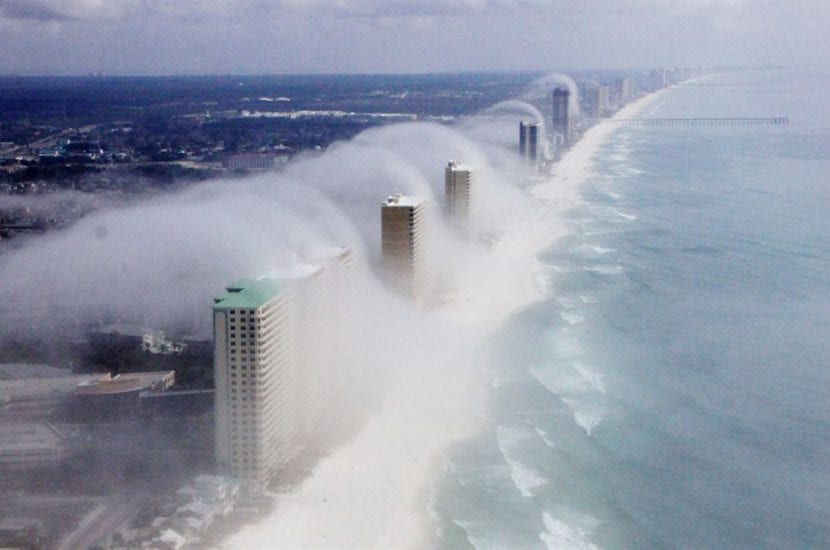
Tsunamis are phenomena potentially destructive capable of wiping out entire coastal cities in minutes. They are a series of waves that are generated in the ocean as a consequence of an earthquake, a landslide, volcanic eruptions or asteroid impacts.
If you want to know how tsunamis occur, then I will explain in detail everything related to these phenomena.
What are tsunamis?
Those who like to surf are always looking for the best wave to "conquer", while enjoying the sea and its conditions. However, a tsunami is not a game. This phenomenon can easily kill several dozen people, just as the one that occurred in 2004 in the Indian Ocean, causing the death of 436.983 people.
The waves of these phenomena can easily measure more than 100km long, a height of up to 30 meters, and travel at a speed of 700km / hSo you have to get away from them as quickly as possible.
How are they produced?
As we mentioned, they can be produced in several ways:
- Underwater earthquakes: these seismic movements are generated by the movement of the tectonic plates that exist on Earth. In doing so, the water on the surface rises and falls as a result of the earthquake itself and the force of gravity. Meanwhile, the water is moving trying to reach a stable position.
- Submarine landslides: Tsunamis can also be generated as a result of subsidence in the sea.
- Underwater volcanic eruptions: Underwater volcanoes can generate enough force to create a large column of water that will give rise to these phenomena.
- Asteroid impactsThese huge rocks, which fortunately reach the planet very little, disturb the surface water. The energy is such that significant tsunamis can be generated.

We hope you have learned more about these phenomena.